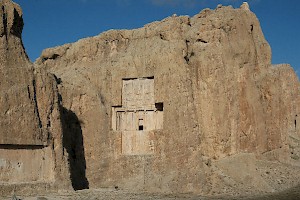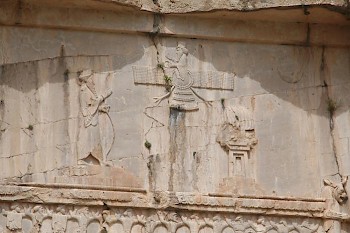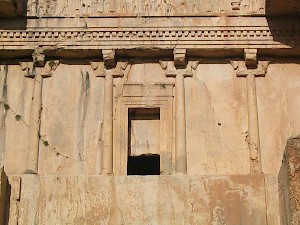Naqš-e Rustam, Achaemenid tomb IV
Q71990833Naqš-e Rustam: archaeological site in Fars (Iran), best known for its Achaemenid tombs and rock reliefs made in the Sasanian age.
Achaemenid Tomb IV (Xerxes?)

Unlike its model, the tomb of Darius, the fourth tomb at Naqš-i Rustam has no inscriptions that mayhelp us identify its owner. However, most scholars agree that it must have been the final resting place of king Xerxes (486-465). He carefully copied the tomb of his father.

The upper register is identical to the relief of Darius' tomb: Xerxes (if the king is Xerxes, of course) is standing in front of an altar, praying to the supreme Ahuramazda and sacrificing to the holy fire. In his right hand, the king has his bow, the royal attribute par excellence. Again, the plaform is carried by people that represent the subject nations. The symbol in the upper right corner represents the moon.

This central part is very interesting because it shows what the columns discovered at, for instance, the Apadana of Persepolis must have looked like. Representations like these have helped archaeologists to reconstruct the façades of Achaemenid palaces.
Literature
Louis Vanden Berghe, Reliefs rupestres de l' Iran ancien (1983 Brussels), #26.